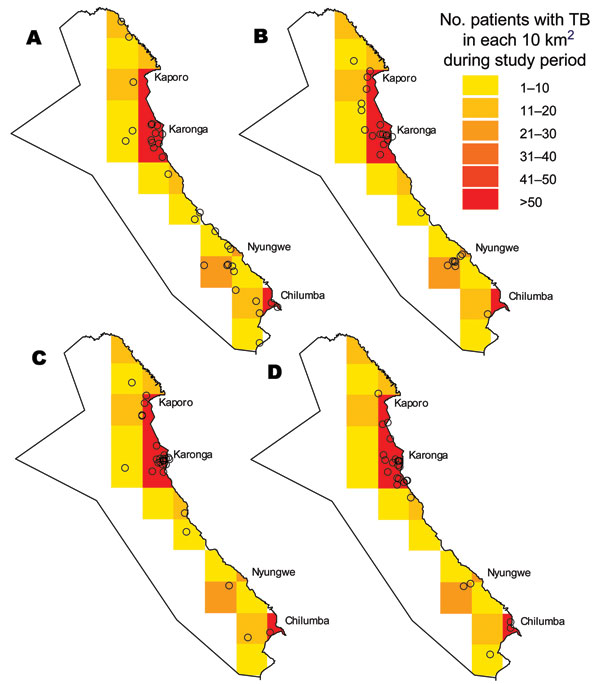Volume 14, Number 7—July 2008
Research
Determinants of Cluster Size in Large, Population-Based Molecular Epidemiology Study of Tuberculosis, Northern Malawi
Figure

Figure. Geographic distribution of the 4 most common strains defined by restriction fragment length polymorphism: A) strain kps12, B) strain kps121, C) strain kps41, and D) strain kps44. Each o represents a patient. Each square is 10 km × 10 km. The background shading represents the total number of tuberculosis (TB) cases in each area during the study period, which largely reflects the population density.
Page created: July 12, 2010
Page updated: July 12, 2010
Page reviewed: July 12, 2010
The conclusions, findings, and opinions expressed by authors contributing to this journal do not necessarily reflect the official position of the U.S. Department of Health and Human Services, the Public Health Service, the Centers for Disease Control and Prevention, or the authors' affiliated institutions. Use of trade names is for identification only and does not imply endorsement by any of the groups named above.